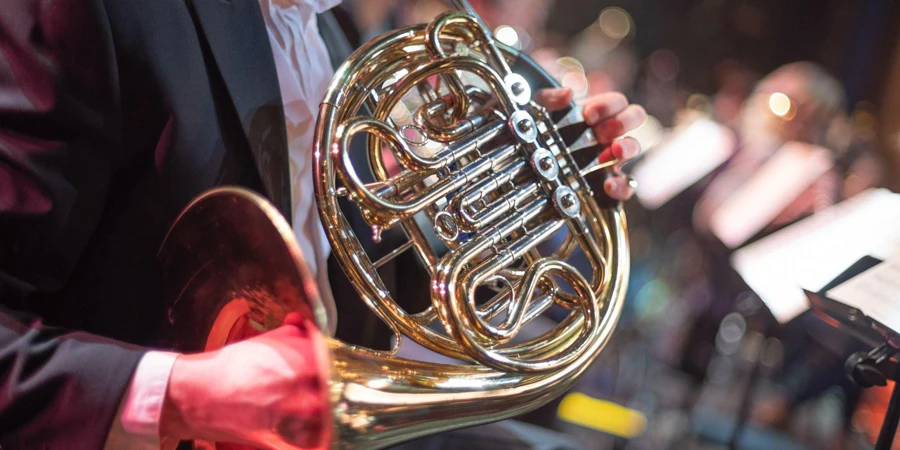Table of Contents
Introduction
French Horn Market Overview
Key Considerations for Selecting a French Horn
Top French Horn Picks
Conclusion
Introduction
Choosing the perfect French horn is crucial for ensuring your brass ensemble delivers exceptional performances. As a business buyer, navigating the complex landscape of French horn options can be challenging. This comprehensive guide will help you make an informed decision when selecting the best French horn for your organization in 2024.
French Horn Market Overview
The global French horn market has experienced steady growth in recent years. In 2023, the market size reached USD 200 million, with a projected compound annual growth rate (CAGR) of 4.2% from 2024 to 2032. North America and Europe dominate the market, accounting for 65% of the global share, while Asia-Pacific emerges as a rapidly growing region. The demand for high-quality French horns continues to rise as musicians seek instruments that deliver superior sound, durability, and playability.
Key Considerations for Selecting a French Horn
Bore Size and Material
The bore size and material significantly impact a French horn’s tonal qualities, making them key considerations for discerning musicians. Smaller bores, around 0.468 inches, offer a brighter, more focused sound with excellent projection, ideal for solo performances that demand clarity and precision. Larger bores, ranging from 0.472 to 0.481 inches, produce a warmer, richer tone with greater depth and complexity, perfectly suited for blending seamlessly into orchestral settings.
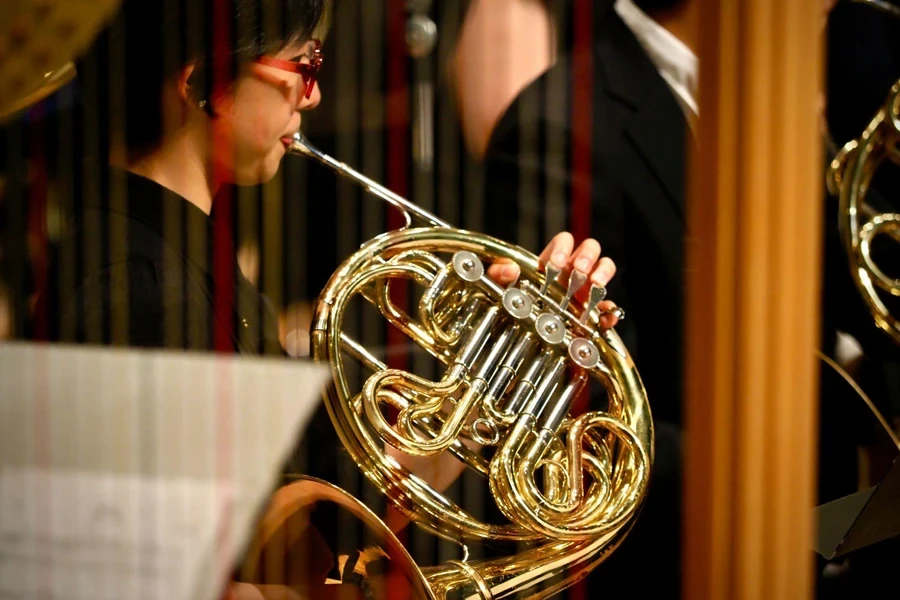
Yellow brass is the most common material, providing a balanced sound that deftly straddles the line between brilliance and warmth. For those seeking a uniquely mellow and burnished tone, gold brass offers a darker timbre that evokes a sense of refined elegance. The instrument’s signature coiled tubing, crafted from these high-quality materials, is the key to its remarkable range, stretching from the low pedal tones to the upper reaches of the treble clef. With the right combination of bore size and material, the French horn becomes a truly versatile and expressive tool in the hands of a skilled performer.
Valve System
French horns come with either rotary or piston valves, each offering distinct advantages for discerning musicians. Rotary valves are more common and feature a cylindrical rotor that smoothly redirects air through additional tubing when engaged, resulting in a seamless transition between notes and a more even tone across the instrument’s range. This fluid action makes rotary valves ideal for the lyrical passages and rich, blended sound often desired in orchestral and classical settings.
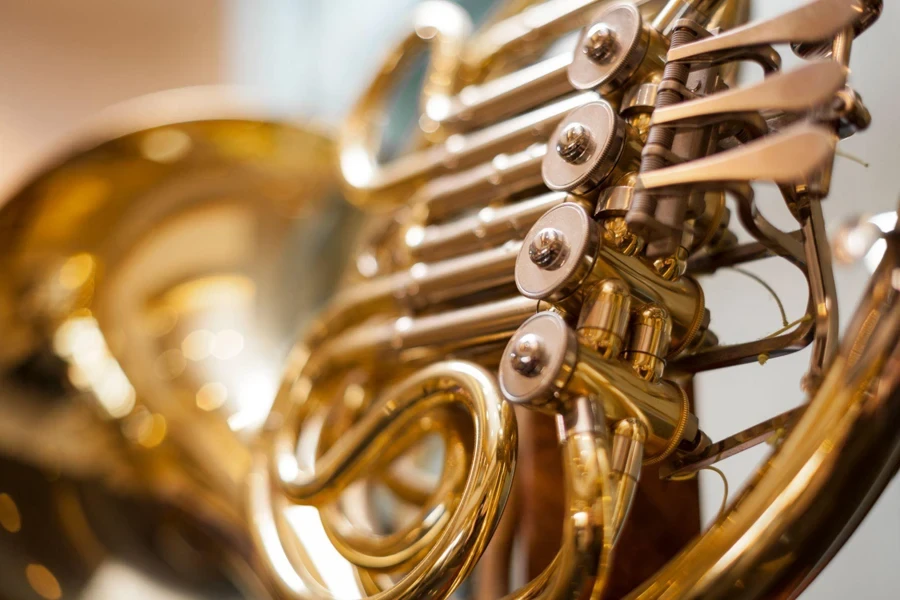
Piston valves, while less popular, employ a precise up-and-down motion to reroute air, providing a slightly brighter sound and faster response. This crisp articulation can be advantageous for certain playing styles and genres, such as jazz, where quick passages and clean note separation are essential. Piston valves also allow for easier “half-valving,” a technique favored by some advanced players for added expressive control.
Regardless of the valve system, proper alignment and regular lubrication are crucial for optimal performance. Rotary valves feature alignment marks that ensure the rotor is correctly positioned for a free-blowing and centered sound, while piston valves should be checked for smooth, noiseless operation. Consistent oiling of the valves and their linkages, along with greasing of the slides, will keep the instrument in top playing condition and prevent costly repairs.
Bell Size and Throat
The bell size and throat design are crucial factors that shape the French horn’s projection and tonal palette. For orchestral settings that demand a rich, expansive sound, larger bells ranging from 12 to 14 inches in diameter are the optimal choice. These generous proportions allow the instrument to assert its presence even amidst the grandeur of a full ensemble.
In contrast, for more intimate solo and chamber music performances, smaller bells in the 10 to 11 inch range are preferable. The compact size enables the horn to produce a focused, penetrating sound that carries clearly to the listener without overwhelming the musical texture.
Equally important is the bell throat configuration. Subtle variations in its shape and diameter regulate the horn’s resistance and response. A carefully calibrated throat strikes a balance between security and flexibility, allowing the musician to navigate the instrument’s range with confidence and finesse. Discriminating musicians will appreciate the nuanced playing experience that a thoughtfully designed bell throat provides.
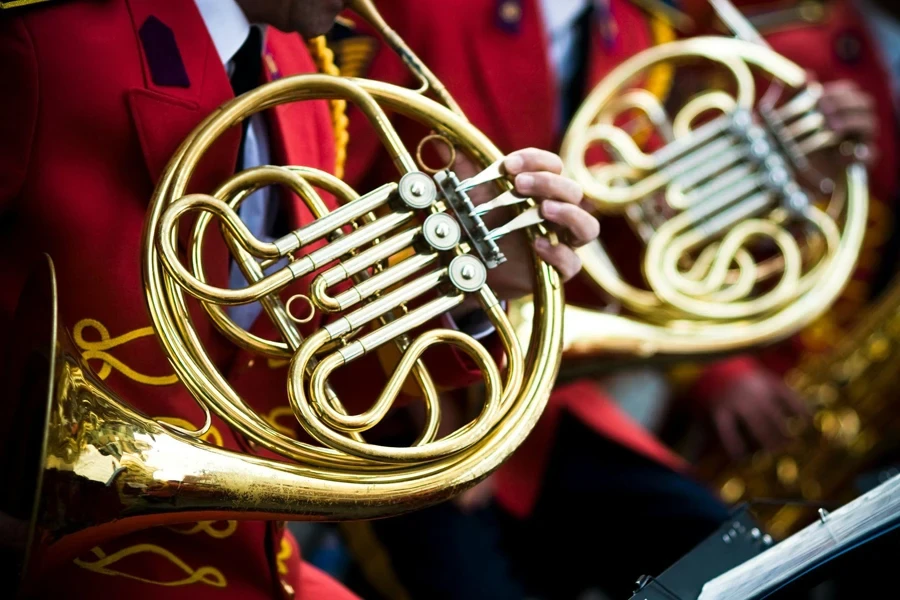
Detachable Bell
For the discerning French horn player seeking versatility and convenience, a detachable bell is an invaluable asset. This innovative design allows for effortless transportation and compact storage, making it a breeze to take your instrument on the go. Whether navigating crowded public transport or packing for a tour, a detachable bell streamlines the logistics without compromising the horn’s integrity.
But the advantages extend beyond mere practicality. With a detachable bell, musicians can explore a palette of tonal colors by experimenting with bells of various materials and sizes. From the warmth of rose brass to the brilliance of nickel silver, each bell imparts its unique character to the horn’s voice. This flexibility empowers players to curate their ideal sound, tailoring it to the demands of diverse musical settings and personal preferences.

When investing in a French horn with a detachable bell, discerning buyers prioritize a secure and reliable connection. A well-engineered mechanism ensures a seamless join between the bell and the body of the horn, preserving the instrument’s structural stability and preventing any loss of sound quality. The best detachable bell designs are virtually indistinguishable from their fixed counterparts in terms of tone and projection.
In the hands of a skilled musician, a French horn with a detachable bell is a powerful tool for artistic expression. It combines the freedom to adapt to different performance situations with the uncompromising sound that is the hallmark of a top-tier instrument. For the serious player, a detachable bell is not just a feature – it is a gateway to new realms of musical possibility.
Ergonomics and Adjustability
For the discerning French horn player, comfort and ergonomics are paramount considerations. A well-designed instrument should adapt to the musician, not the other way around. That’s why savvy buyers seek out horns equipped with a suite of adjustable features that accommodate a wide range of hand sizes and playing positions.
Take, for instance, the adjustable hand rest, also known as a flipper or duck’s foot. This ingenious device supports the weight of the instrument, alleviating strain on the player’s pinky finger. By fine-tuning its position, musicians can achieve an optimal balance that feels natural and effortless.

Equally important are the thumb lever and finger hook. An adjustable thumb lever allows players to customize the instrument’s response to their unique physiology, ensuring a seamless and intuitive playing experience. Similarly, a finger hook that can be repositioned to suit the player’s hand size and shape is a game-changer for comfort and control.
When these elements work in harmony, the result is a French horn that feels like an extension of the musician’s body. Fatigue melts away, even during marathon playing sessions, allowing the artist to focus entirely on the music. For the serious player, this is not a luxury – it is a necessity.
Top French Horn Picks for 2024
When selecting a professional-grade French horn, there are several standout models that cater to the needs of orchestral players, soloists, and chamber musicians.
The Conn 8D CONNstellation Series Double Horn is a top choice for those seeking a powerful, projecting sound. Its 0.468-inch bore and 12-inch yellow brass bell deliver a focused, resonant tone that cuts through ensembles. The responsive rotary valves enable precise articulation, making it well-suited for orchestral and solo performances. The 8D’s adjustable finger hook and durable construction ensure comfort and reliability during extended playing sessions.
For musicians desiring a warm, rich tone, the Yamaha YHR-671 Custom Series Double Horn is an excellent option. Featuring a 0.472-inch bore and a 12.2-inch gold brass bell, this horn produces a velvety sound with ample depth and complexity. The YHR-671’s ergonomic design includes an adjustable thumb lever and pinky hook, providing a customized fit for enhanced playability. Its balanced weight distribution and smooth valve action facilitate effortless technique, making it a versatile choice for various musical settings.
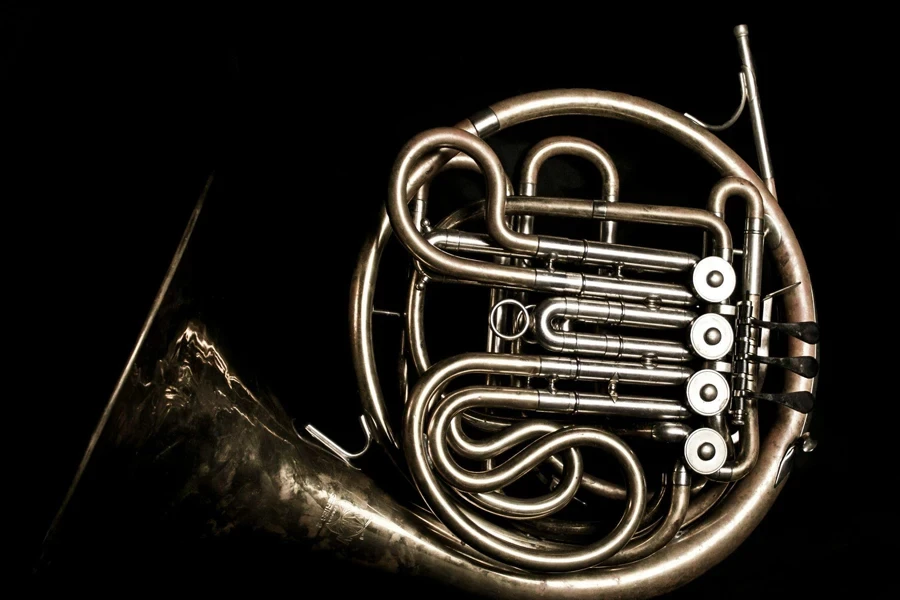
The Holton H379 Farkas Series Double Horn, designed in collaboration with renowned horn player Philip Farkas, prioritizes tonal focus and even response. With a 0.468-inch bore and a 12.25-inch yellow brass bell, the H379 delivers a centered sound that maintains clarity across all registers. Its consistent resistance and precise intonation make it ideal for solo and chamber music, where blend and balance are paramount. The H379’s durable nickel silver construction ensures long-lasting performance.
For those seeking a handcrafted instrument of the highest quality, the Engelbert Schmid ES1 Double Horn is a standout choice. Boasting a 0.472-inch bore and a 12.4-inch yellow brass bell, the ES1 produces a robust, noble sound with an expansive dynamic range. Its precise rotary valves and responsive action allow for agility and flexibility akin to a woodwind instrument. The ES1’s meticulous craftsmanship and attention to detail result in a horn that excels in both orchestral and solo settings, offering musicians a reliable and inspiring tool for their artistic expression.
Conclusion
Selecting the perfect French horn requires careful consideration of various factors, including bore size, valve system, bell design, ergonomics, and overall performance. By understanding these key elements and exploring the top picks for 2024, you can make an informed decision that will elevate your brass ensemble’s sound and musicianship.
Don’t forget to click the “Subscribe” button to stay updated with more articles that align with your business needs and interests on the Alibaba Reads sports blog.
